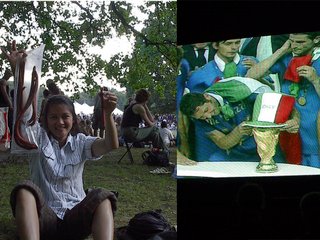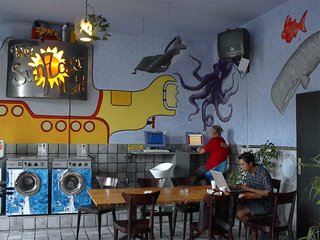
We also went and studied the St.Mary's chruch - Building started mid 13th century, expanded in the 15th century in the style of the French cathedral style and the Marienkirche in Lübeck. Features include the astronomical clock built in 1472. Building started mid 13th century, but in 1398 the nearly finished building collapsed. After that a cross-shaped Basilica emerged, built in the style of the French cathedral style and the Marienkirche in Lübeck. Its tower is Baroque. The art treasures of the Marienkirche are worth seeing including the astronomical clock built in 1472, the bronze baptismal font consecrated in 1290, the Rochus altar from around 1530 and the Baroque organ.
History of rostock: The name "Roztoc" first appears in 1161 AD in a chronicle by the Danish historian Saxo Grammaticus. At that time the Slavic stronghold was attacked by the king of the Danes. In 1200 German merchants and craftsmen founded the settlement of Rostock here. Eighteen years later, it received its charter from Prince Borwin I. In the course of time, the Middle and New Towns were built. In 1265 they and the Old Town united in a single community. Trade and crafts flourished and the city gained monetary sovereignty as well as full judicial authority. In 1323 Rostock acquired the little fishing hamlet of Warnemünde, thus securing free access by water to the Baltic Sea. Soon Rostock, Lübeck and Wismar founded the Hanseatic League. Rostock became one of the largest and most powerful cities on the Baltic – due not least of all to establishment here of Baltic regions first university in 1419.
The city's dynamic growth was halted for a lengthy period by collapse of the Hanseatic League, effects of the Thirty Years' War and the devastating conflagration of 1677. Only in the late 19th century did Rostock experience a renaissance of shipping under sail, becoming an important harbor for the export of grain.
Today Rostock is a vibrant seaport which proudly bears the name "Hansestadt" (Hanseatic City). Her churches, Town Hall and typical patrician town houses recall a glorious era of sailing ships dating back to the early Middle Ages. Old and new harmoniously blend to form a city-scape that could only have emerged over the course of many centuries. University Square, the Convent of the Holy Cross, the old town walls and St. Mary's Church are but a few of the witnesses to the past bringing Rostock's history to life.





















